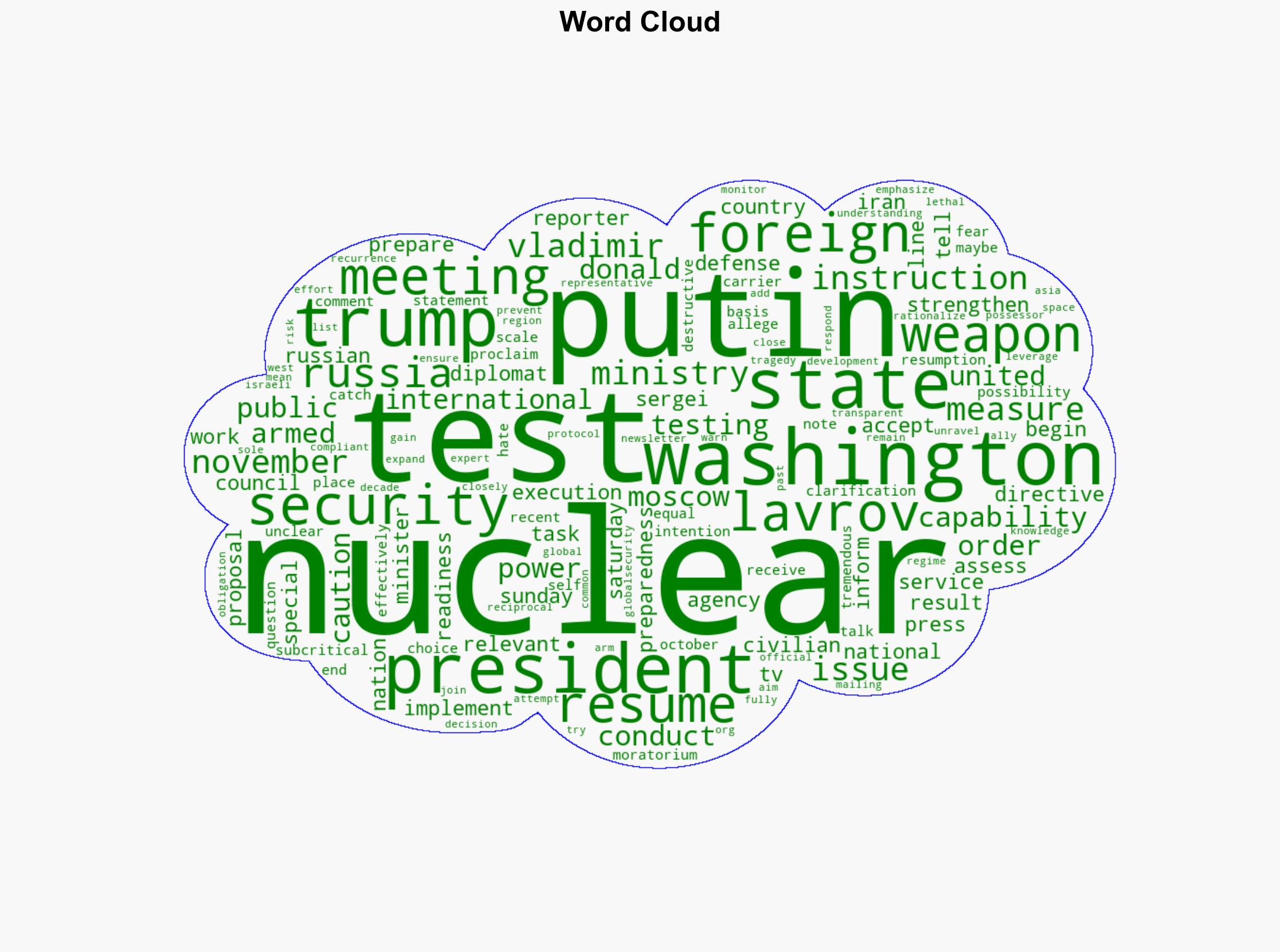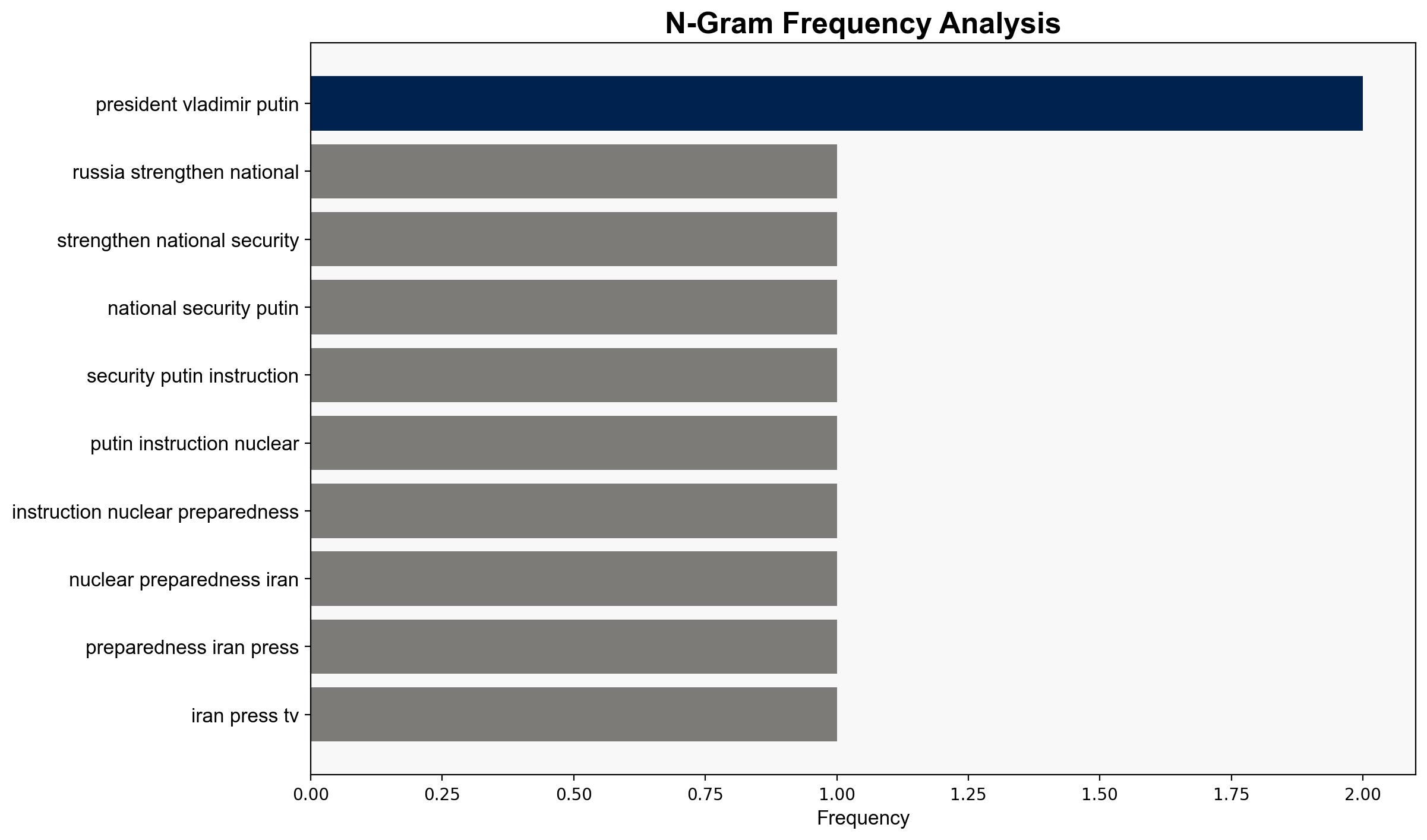Russia moves to strengthen national security after Putin’s instructions on nuclear preparedness – Globalsecurity.org
Published on: 2025-11-10
Intelligence Report: Russia moves to strengthen national security after Putin’s instructions on nuclear preparedness – Globalsecurity.org
1. BLUF (Bottom Line Up Front)
Russia’s recent actions to enhance its nuclear preparedness, following President Putin’s directive, may be a strategic response to perceived threats from the United States’ potential resumption of nuclear testing. The most supported hypothesis is that Russia is preparing for a reciprocal response to U.S. actions, with a moderate confidence level. It is recommended to closely monitor developments in U.S.-Russia nuclear relations and engage in diplomatic efforts to prevent escalation.
2. Competing Hypotheses
1. **Hypothesis 1**: Russia’s actions are primarily defensive, aimed at ensuring national security in response to the U.S.’s potential resumption of nuclear testing. This hypothesis suggests that Russia is preparing to match U.S. capabilities to maintain strategic parity.
2. **Hypothesis 2**: Russia’s nuclear preparedness is part of a broader strategy to project power and influence globally, using the threat of nuclear capability as leverage in international negotiations and regional conflicts.
Using the Analysis of Competing Hypotheses (ACH) 2.0, Hypothesis 1 is better supported due to the direct reference to U.S. actions and the historical context of reciprocal measures in nuclear policy.
3. Key Assumptions and Red Flags
– **Assumptions**: It is assumed that Russia’s actions are directly linked to U.S. nuclear testing policies. Another assumption is that both nations will adhere to international obligations despite escalations.
– **Red Flags**: The lack of specific details on the nature of Russia’s nuclear preparedness measures and the potential for misinterpretation of U.S. intentions could lead to escalation.
– **Blind Spots**: The report does not address potential internal Russian political motivations or the influence of other global nuclear actors.
4. Implications and Strategic Risks
– **Geopolitical Risks**: Increased tensions between the U.S. and Russia could lead to a new arms race, destabilizing global security.
– **Economic Implications**: Heightened military expenditure could strain national budgets, impacting economic stability.
– **Cyber and Psychological Dimensions**: The threat of nuclear escalation may increase cyber espionage activities and psychological warfare tactics.
5. Recommendations and Outlook
- Engage in diplomatic dialogues with both Russia and the U.S. to clarify intentions and prevent miscalculations.
- Enhance intelligence gathering on nuclear developments to provide early warning of potential escalations.
- Scenario Projections:
- **Best Case**: Diplomatic negotiations lead to renewed arms control agreements.
- **Worst Case**: A breakdown in communication results in a new nuclear arms race.
- **Most Likely**: Continued posturing without immediate escalation, but increased global tensions.
6. Key Individuals and Entities
– Vladimir Putin
– Sergei Lavrov
– Donald Trump
7. Thematic Tags
national security threats, nuclear deterrence, geopolitical strategy, U.S.-Russia relations





